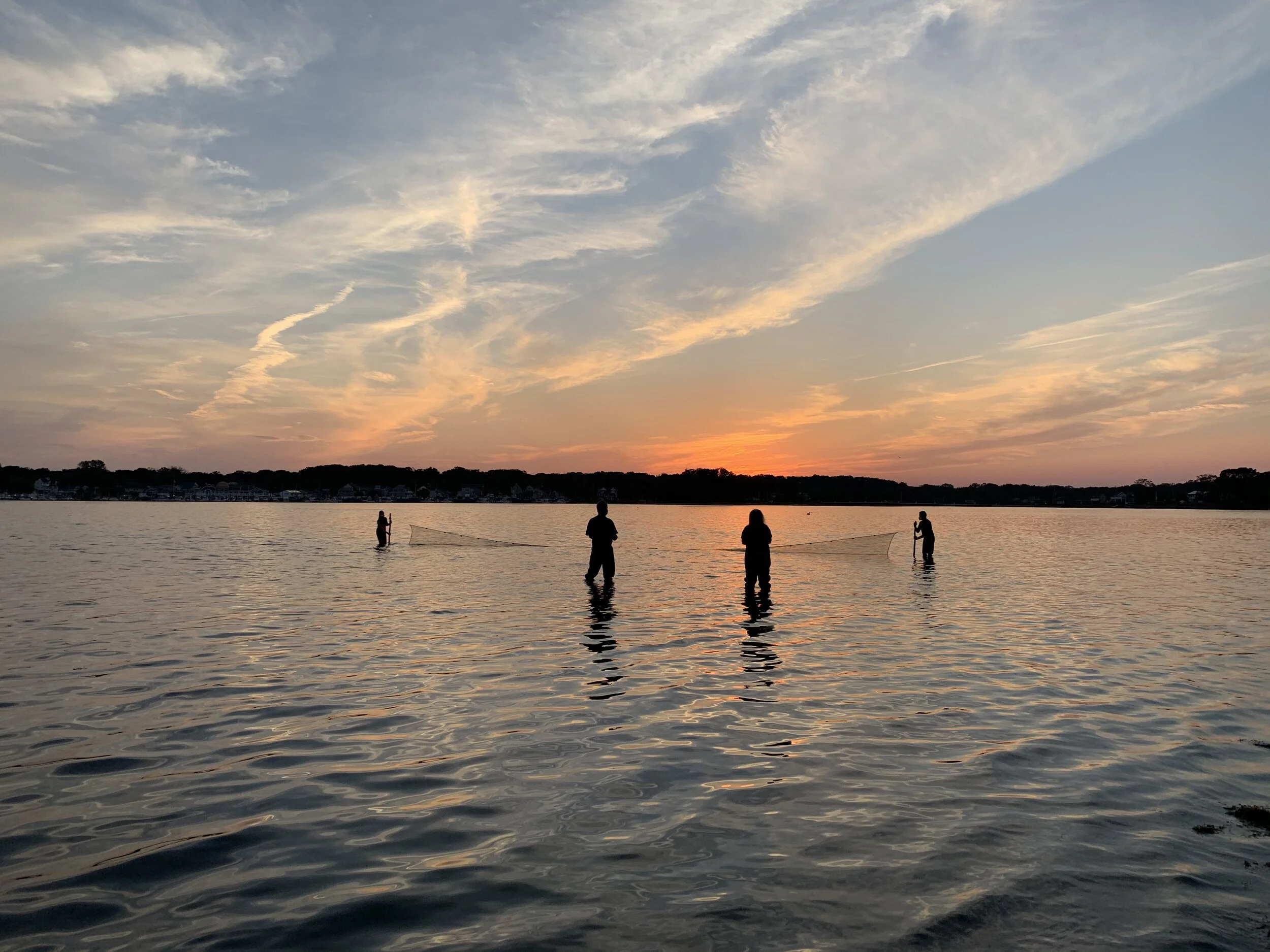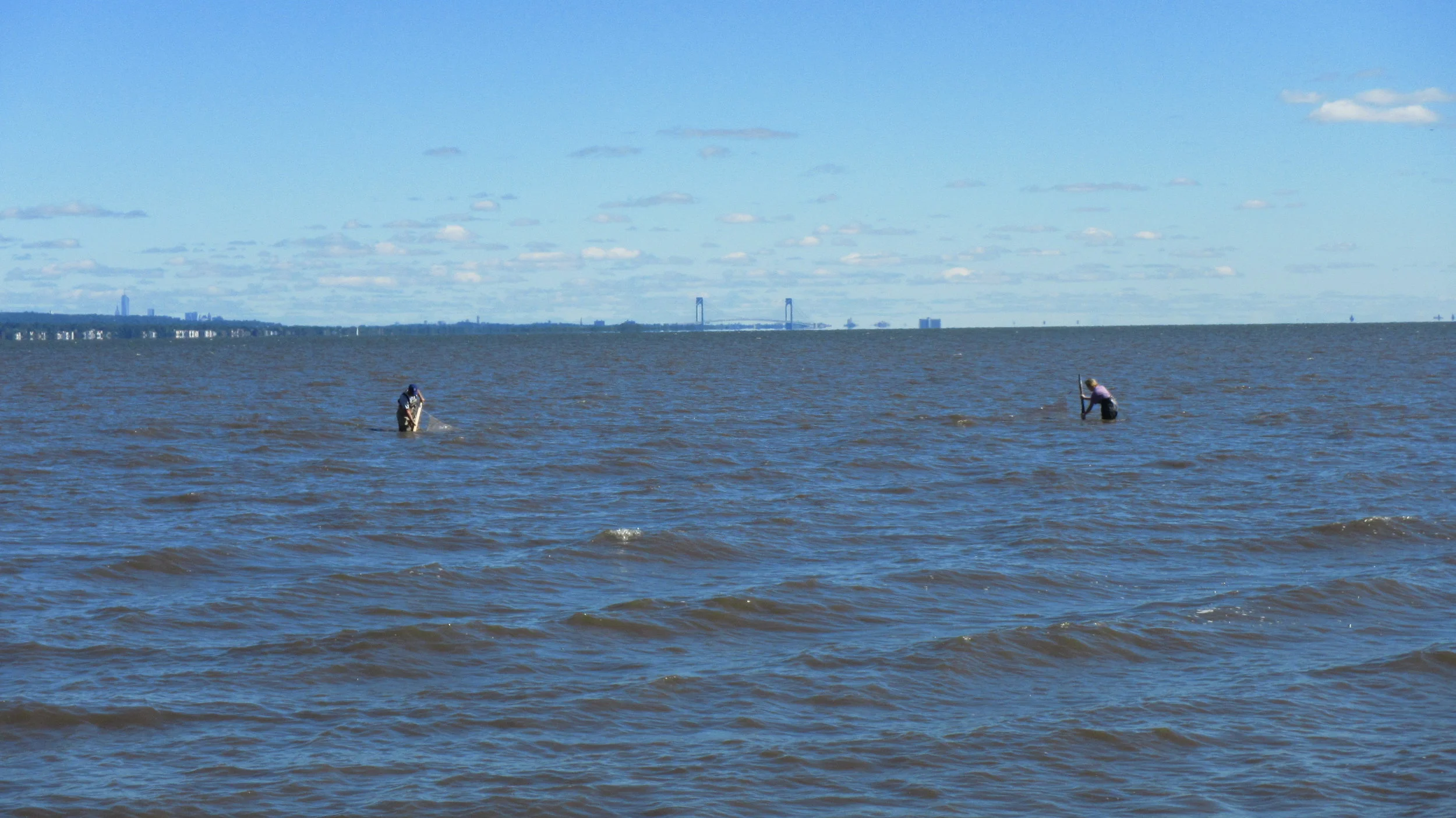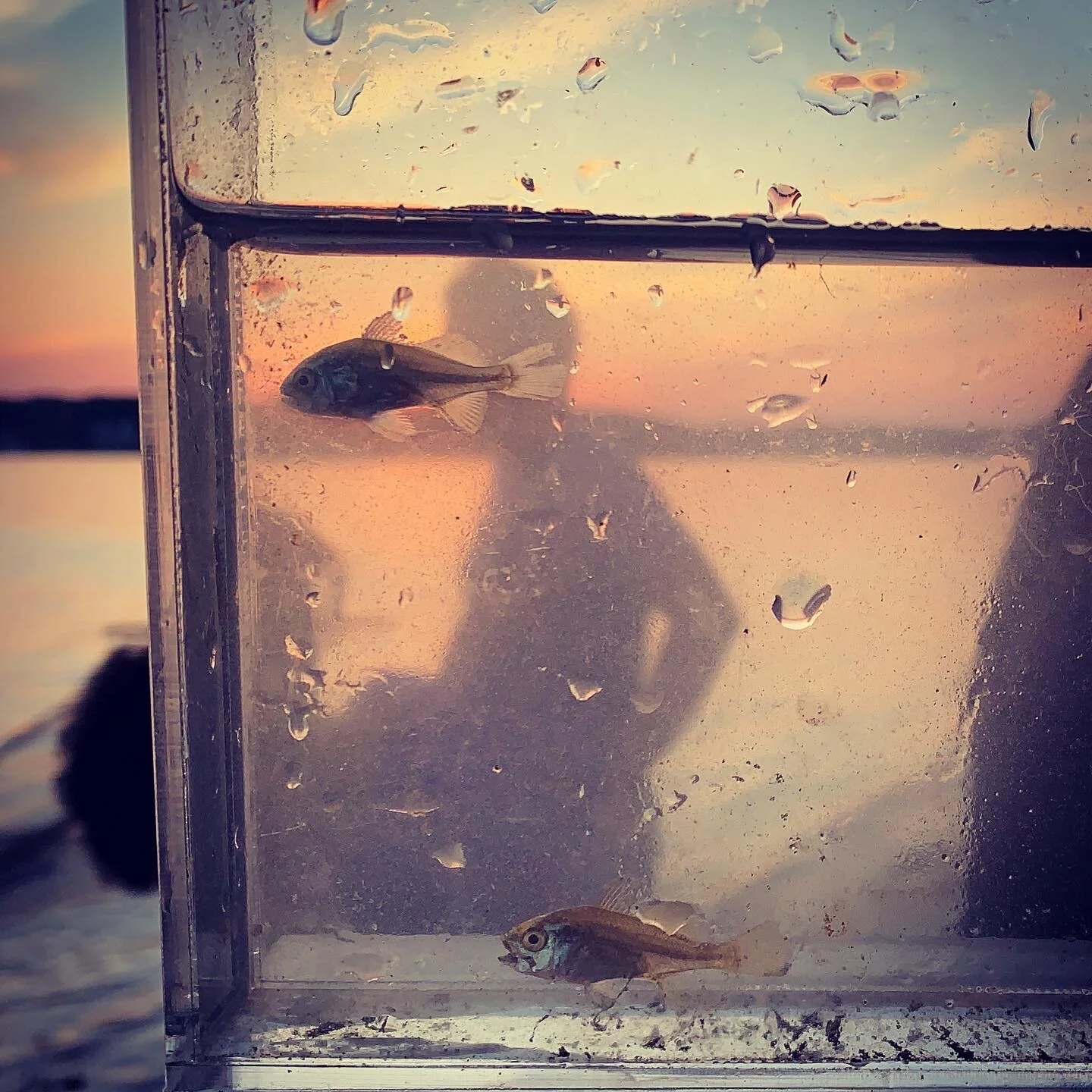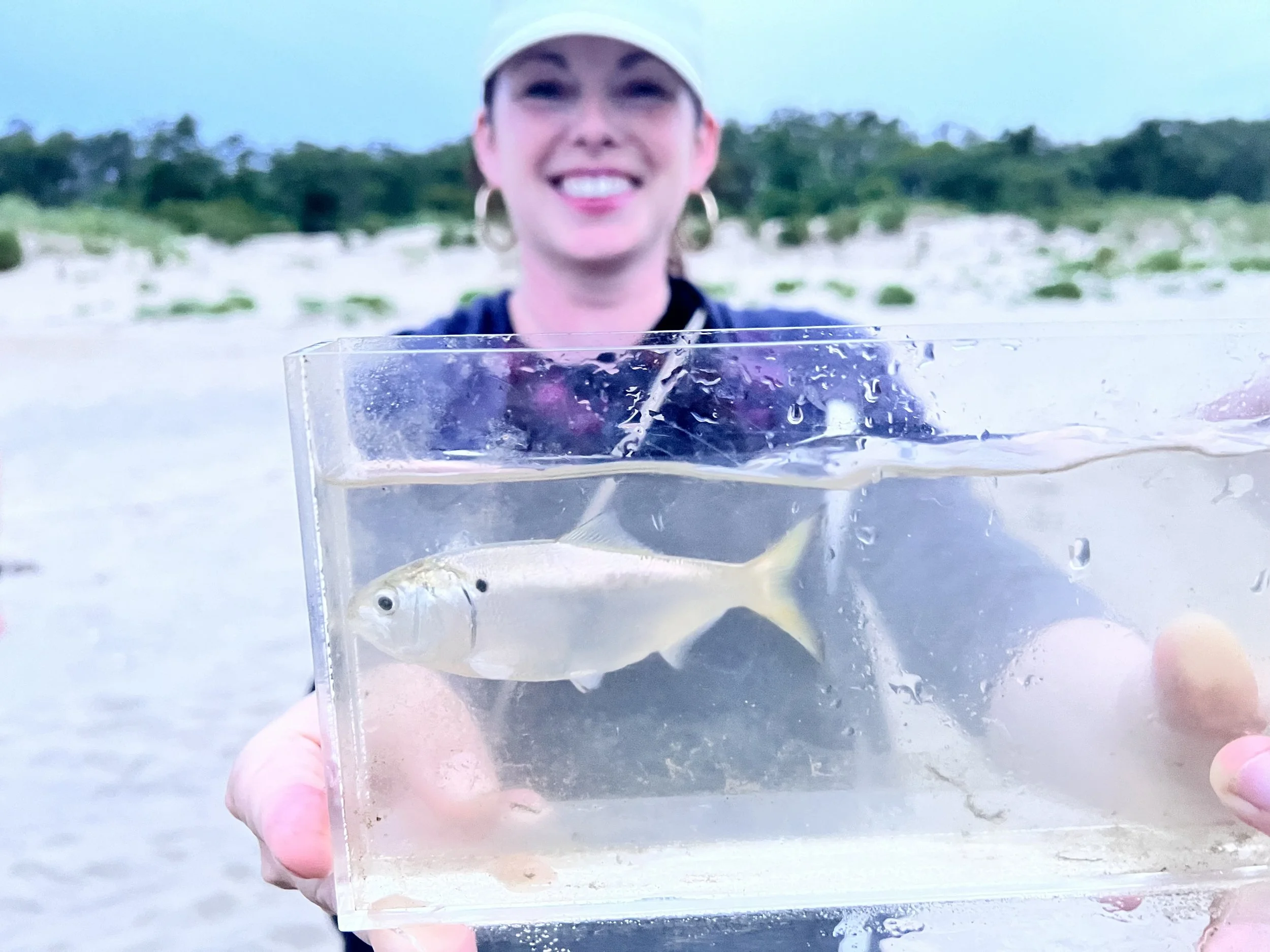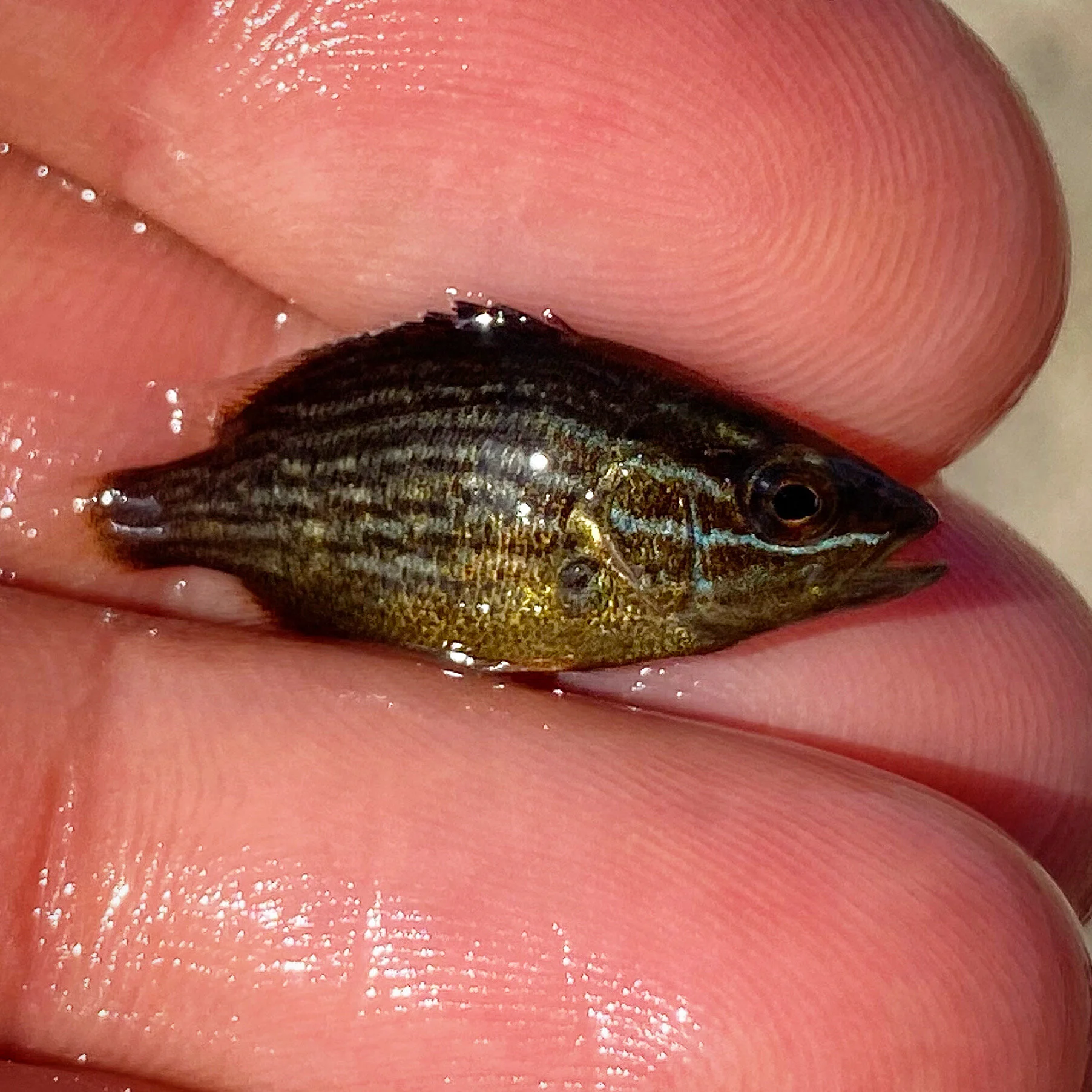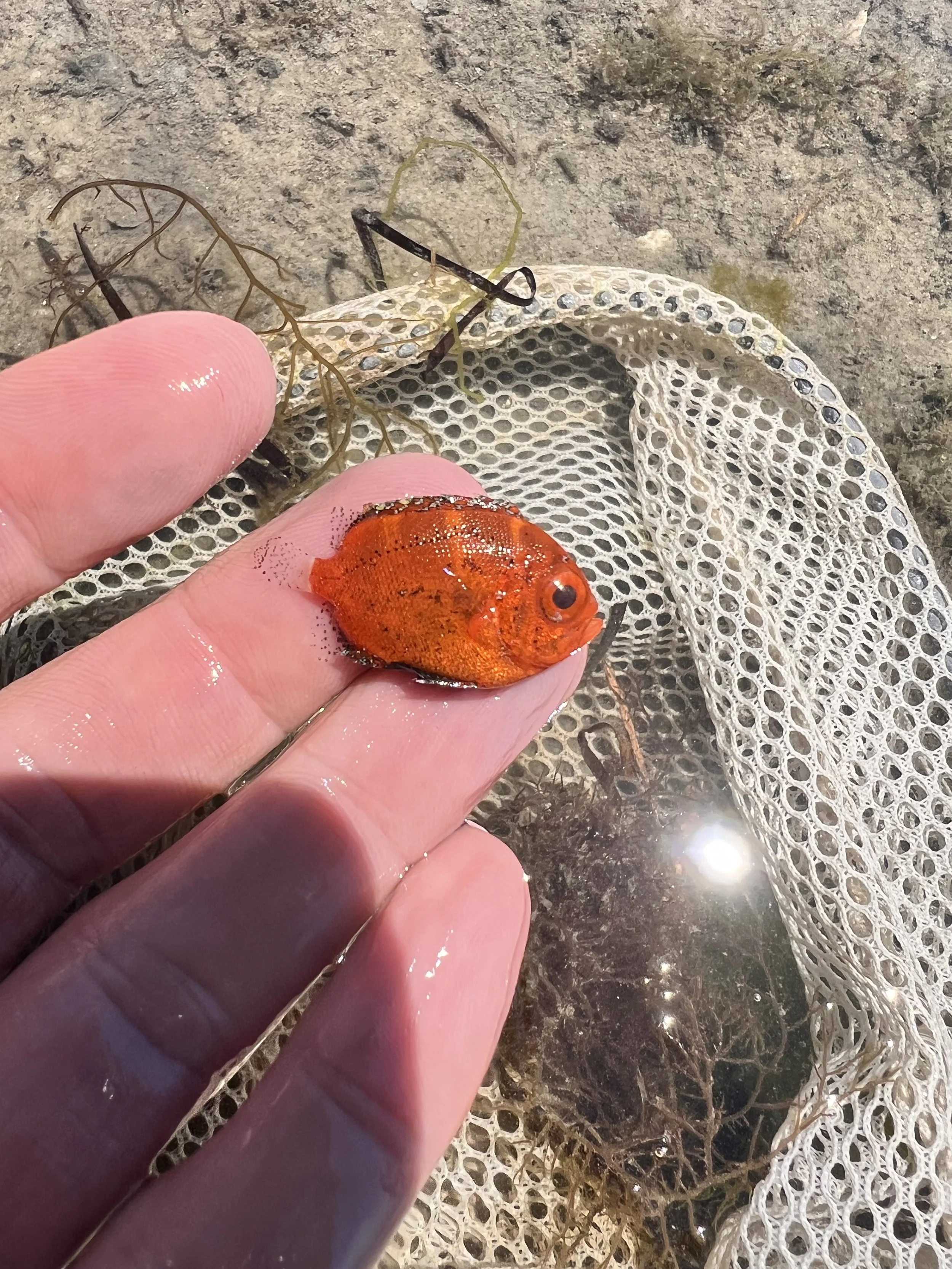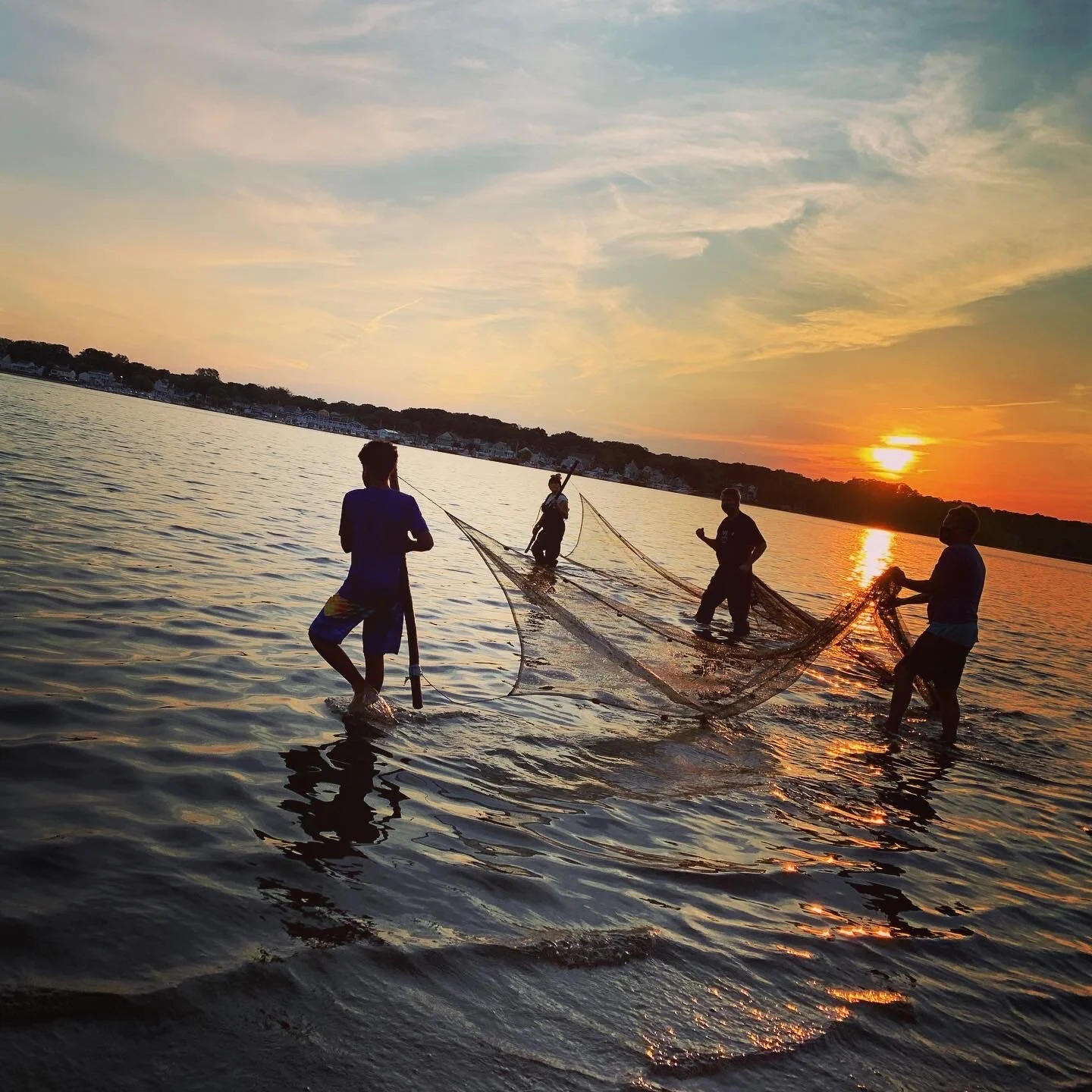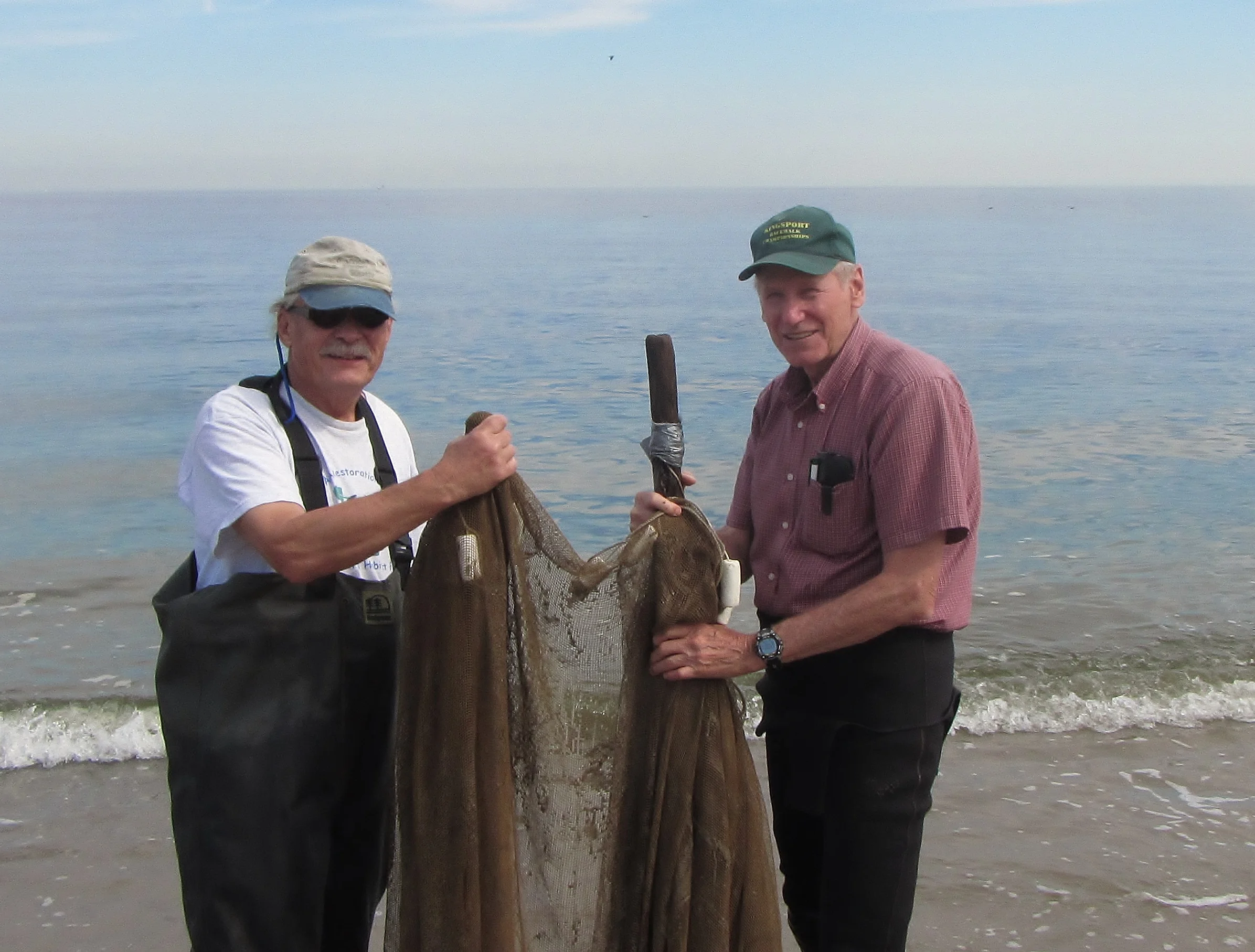
Volunteer for Summer Fish Surveys Along the Jersey Shore
In September 2021, members of Save Coastal Wildlife put a camera underwater in Sandy Hook Bay, NJ. We captured a large school of Atlantic Silversides or Spearing (Menidia menidia) and the sight and sounds of a pair of Northern Puffer fish (Sphoeroides maculatus).
MAKE SURE TO TURN THE VOLUME UP LOUD TO HEAR THE PUFFER FISH AND OTHER SOUNDS OF AN ESTUARY.
An American Eel (Anguilla rostrata) moves back into Sandy Hook Bay, NJ after being discovered in our seine net on June 14, 2015 along Sandy Hook Bay, NJ. Watch as the eel’s streamlined body and slick layer of slime allows this fish to propel itself forward on land. The eel causes each segment of its body to oscillate into a “figure-eight” form to advance.
IT’S A BIOLOGICAL ASSESSMENT OF ESTUARINE WATERS!
JOIN US FOR A FISH SURVEY EVENT TO DISCOVER WHAT LIVES ALONG THE EDGE OF THE JERSEY SHORE!
IT’S FREE - BRING YOUR FAMILY, BRING A FRIEND, OR JUST BRING YOURSELF!
Please visit the home page of Save Coastal Wildlife to register. Space may be limited at certain locations due to vehicle parking.
2025 Dates & Locations:
Saturday, June 14 from 4:00pm - 5:00pm in the Borough of Atlantic Highlands, NJ.
Saturday, June 28 from 4:00pm - 5:00pm in the Borough of Keyport, NJ at Cedar Street Park.
Friday, July 11 from 9:30pm to 10:30pm at the Bayshore Waterfront Park in the Port Monmouth section of Middletown Township.
Friday, July 25 from 9:00pm to 10:00pm at the Bayshore Waterfront Park in the Port Monmouth section of Middletown Township.
Saturday, August 9, from 8:00pm - 9:30pm in the Borough of Atlantic Highlands NJ. FULL MOON
Saturday, August 23 from 1:30pm to 2:30pm in the Borough of Atlantic Highlands, NJ.
Sunday, September 7 from 7:00pm to 8:00pm along the Manasquan River, NJ.
Sunday, September 21 TBD
Sunday October 5 fro 12:00pm - 1:00pm in the Borough of Atlantic Highlands, NJ (End-of-Season)
All above dates and locations may change or be cancelled due to the weather, wind, tides or circumstances that are beyond our control. Please make sure you are signed up to receive emails from Save Coastal Wildlife to get the latest information.
FIND OUT WHAT FISH, CRABS AND OTHER SEA CREATURES CALL THE EDGE OF THE JERSEY SHORE HOME!
We use nets and cameras at different sites along the Jersey Shore throughout the summer and early fall to see what lives in the water.
Some of the fish we commonly discover
conducting a fish survey along the Jersey Shore.
Volunteers can help drag a long net (called a seine net) or a plankton net through the water to find out what might live in the shallow parts of an estuary. The catch is never the same; we may catch juvenile fish, shrimp, or even baby puffers or seahorses in the net.
Seining team members are citizen scientists. All fishes, crabs, and other aquatic creatures are identified, measured, and cataloged; and subsequently returned to the water.
In addition, volunteers collect water temperature, salinity, and turbidity information; and document the tidal stage, as well as note the abundance and diversity of aquatic vegetation in the area.
The species we discover are limitless; it all depends on what species are visiting the area when we are seining.
There is no doubt the more members of Save Coastal Wildlife nonprofit conduct public seining events, the better picture people obtain of the bay. Seining is a method of taking the pulse of a local aquatic ecosystem. It's a way to gain an insight into the health of the near shore environment where many people swim, fish, and enjoy the Jersey Shore. It's always a fun and interesting time. Join Us!
On Saturday, August 22, 2020, members of Save Coastal Wildlife conducted a seining survey during sunset near the Shark River inlet, NJ.
Seining in Raritan Bay, New Jersey during low tide
A juvenile Atlantic Needlefish (Strongylura marina) discovered in Raritan Bay, NJ.
One of the many fish species we discovered in 2020 were a small pair of young-of-the-year Silver Perch (Bairdiella chrysoura).
Adult Atlantic menhaden or bunker fish (Brevoortia tyrannus) found off the coast of Port Monmouth, NJ 2024.
In July 2021, members of Save Coastal Wildlife discovered an adult cow-nose ray along the edge of an estuary while conducting a fish survey along Sandy Hook Bay, NJ.
Sometimes we even discover tropical fish!
Juvenile Gray Snapper or Mangrove Snapper (Lutjanus griseus)
Juvenile Lookdown fish (Selene vomer)
Juvenile short bigeye (Pristigenys alta)
Juvenile Florida Pompano (Trachinotus carolinus)
Surface temperatures in the western North Atlantic. The North American landmass is black and dark blue (cold), while the Gulf Stream is red (warm). Source: NASA
Why would tropical fish be found along the Jersey Shore?
Usually around late summer and early fall (sometimes a lot earlier) when local ocean water temperatures are 70 degrees Fahrenheit or higher, undetermined amounts of juvenile fish that were born earlier in the year on coral reefs near the coast of Florida or in the Caribbean Sea, are swept north in the warm water of the Gulf Stream current. At times, the Gulf Stream forms a warm-water eddy or ring that swings close to New Jersey. Tropical fish swimming within this warm-water whirling motion will be swept into local waters along the Jersey Shore, including Sandy Hook Bay, Barnegat Bay and Delaware Bay.
The Gulf Stream originates in the Gulf of Mexico and flows northward around Florida and east of the United States. The current carries warm water through the Caribbean and up to Europe. Along with the warm water, the tropical fishes travel along the coastline of the Atlantic Ocean. The Gulf Stream can carry tropical fish and other organisms north, with some species occasionally appearing in New Jersey waters.
Although any species of tropical fish has the potential to be found here, the majority are members of a colorful tropical-looking family of fishes called jacks. The most common include Lookdowns, Crevalles, Permits, Pompanos, and Moonfish.
This is why we always say - you never know what you will find in a seine net. The catch is always different every day. Sometimes even tropical fish can be found!
Why conduct fish surveys?
These surveys provides a quick snapshot of the health of an aquatic ecosystem. If the aquatic ecosystem is able to support a diversity of species, then it is generally considered to be productive and in good shape.
New Jersey is a coastal state with many estuarine waterways and tidal wetlands that many people have no idea what lives in these shallow bodies of brackish waters.
An estuary is where freshwater meets and mixes with saltwater to make brackish water. Two high tides and two low tides just about every day along the Jersey Shore help to mix freshwater from inland rivers, streams and creeks with saltwater from the ocean within a semi-enclosed and relatively shallow body of water such as a bay, sound, lagoon, or cove.
The word "estuary" is derived from the Latin word “aestuarium” meaning tidal inlet of the sea, which in itself is derived from the term “aestus,” meaning tide.
Estuaries and their surrounding wetlands are home to unique plant and animal species. They provide a permanent home, or a seasonal home or act as an important nursery or breeding area for many coastal animals including horseshoe crabs, blue-claw crabs, bluefish, striped bass, harbor seals, ospreys, seahorses, the eastern oyster, and both the American oystercatcher and the American eel. Anadromous fish like American shad, striped bass, river herring, and the Atlantic sturgeon spend their lives in the ocean, but migrate to estuaries to spawn in freshwater. American eels do the opposite. American eels are catadromous species that reproduce in salt water, and after an oceanic larval stage, migrates to brackish or fresh water for growth to maturity. Upon reaching maturity, the American eel migrate back to the ocean to spawn.
In New Jersey there are several important estuaries. Sandy Hook Bay, Raritan Bay, the Navesink River, and Shrewsbury River help to make up the Hudson-Raritan Estuary Complex, which is one of the largest estuaries on the East Coast of the United States, as well as home to one of the busiest harbors in the entire world - Upper New York Bay.
Farther south there is the Shark River, Manasquan River, Barnegat Bay, Great Bay Estuary, Absecon Bay, Great Egg Harbor Bay and Delaware Bay, to name just a few.
These bodies of estuarine water rank along with tropical rainforests and coral reefs as the world's most productive ecosystems, more productive than both the rivers and the ocean that influence them from either side. Estuaries form transition zones linking freshwater and marine biomes, and as a result produce high inputs of nutrients which in turn help to create vast populations of phytoplankton that provide the primary food source for zooplankton, and together form the base of a large and diverse aquatic food chain.
Seining along the Shark River, NJ
A juvenile summer flounder or fluke flatfish (Paralichthys dentatus).
A juvenile Northern Stargazer (Astroscopus guttatus).
Fish Survey Archives
We have been seining and conducting fish surveys along the Jersey Shore for a long time.
Check out below the results from years passed.
Frank Steimle (left) and Eugene W. Geer Jr (right) started a series of organized public seining events in 1971 along Raritan Bay and Sandy Hook Bay, NJ to help educate people about the fish, crabs, and other aquatic organisms living in local waters during the early 1970s.
Both men are the inspiration for Save Coastal Wildlife’s present-day fish survey events along the Jersey Shore. Their aquatic surveys over the years provided a valuable insight into the health and biodiversity of the near shore environment where many small estuarine creatures live, spawn, or forage; and where also many people swim and enjoy the water.
Above picture taken in 2015 at the Bayshore Waterfront Park.
Sandy Hook Bay & Raritan Bay Estuary
2010 to 2019
The following fish survey events from 2010 to 2019 were part of “Seine the Bay Day” activities hosted by the Bayshore Regional Watershed Council and later Save Coastal Wildlife. Volunteers would seine at four (4) sites along Raritan Bay & Sandy Hook Bay, NJ near the beginning of the summer season and also around the end of the summer season.



